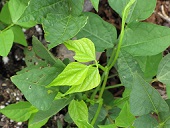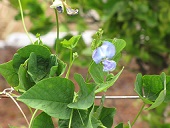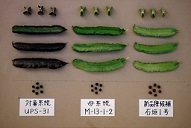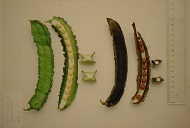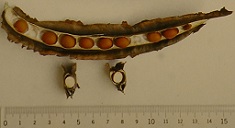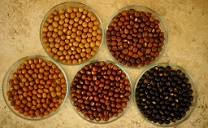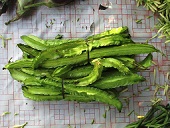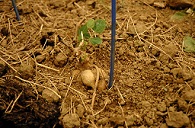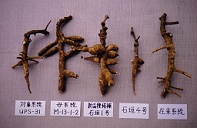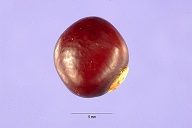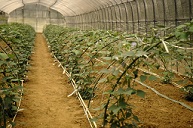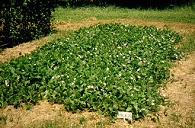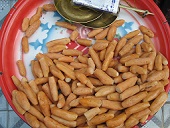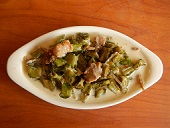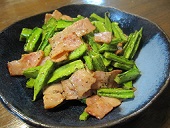| Winged bean - Psophocarpus tetragonolobus | |||||||||||||||||||||||||||||||||||||||||||||||
|---|---|---|---|---|---|---|---|---|---|---|---|---|---|---|---|---|---|---|---|---|---|---|---|---|---|---|---|---|---|---|---|---|---|---|---|---|---|---|---|---|---|---|---|---|---|---|---|
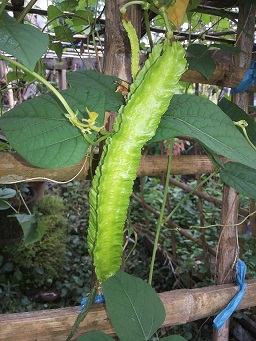 Fig. 1  Winged bean pod 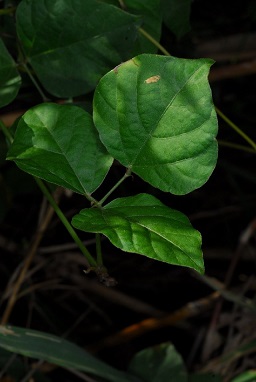 Fig. 2  Three leaflets 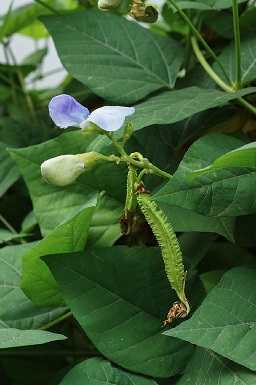 Fig. 3  Flowers and fruit 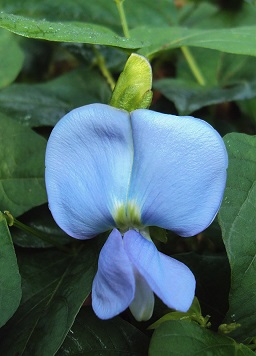 Fig. 4  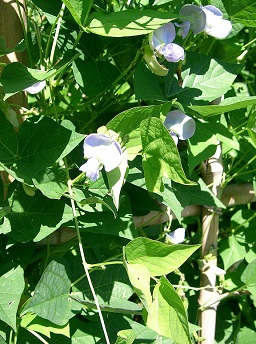 Fig. 5  Psophocarpus tetragonolobus Osaka-fu, Japan 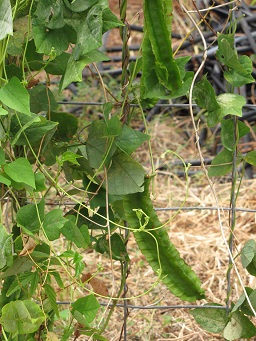 Fig. 6  P. tetragonolobus (wing bean), leaves and seedpod Waiehu, Maui, Hawai'i 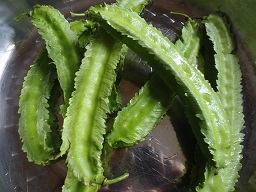 Fig. 17  Purchased in Haikou, Hainan, China 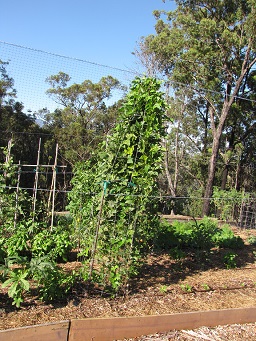 Fig. 18  P. tetragonolobus (wing bean), habit in vegetable garden Hawea Pl Olinda, Maui, Hawai'i 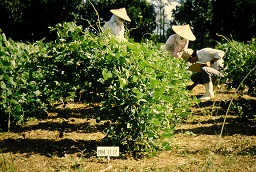 Fig. 23  Cultivation of the winged bean ‘urizun’ Okinawa, Japan 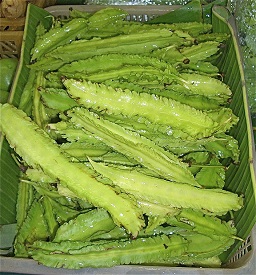 Fig. 24  Goa beans ไทย: ถั่วพู (thua phu) 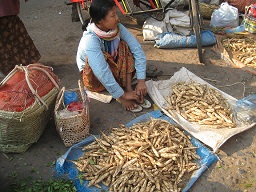 Fig. 25  Roots of the winged bean Mandalay, Myanmar 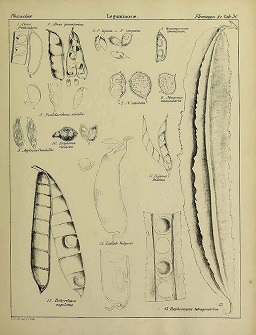 Fig. 29  Icones carpologicae by T. S. Ralph 1849 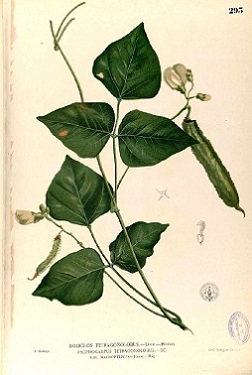 Fig. 30  Dolichos tetragonolobus. P. tetragonolobus var Macropterus | Scientific
name Psophocarpus tetragonolobus (L.) DC. Common names Winged bean, Goa bean, princess bean, four angled bean, asparagus bean, asparagus pea, princess-pea, supermarket bean, short day asparagus pea, pois asperge, pois carré, haricot ailé, pois ailé, dólico de Goa, frijol alado, judia careta, calamismi, flügelbohne, Goabohne, sikaku mame, pe saung ya, hto pong, ku bemya, si leng dou, si jiao dou, sz kok tau, Goabønne, ketjipir, Goanpapu, fagiolo quadrato, prâpiëy, thwàx ph'uu, kecipir, kethipir, ketjeepir, kachang botol, kacang botol, kacang kelisa, kachang botor, kacang botor, kacang sirek, kechang bolon, kachang belimbing, fava de cavalo, vingböna, segidilla, sigarilya, sigarillas, sigadillas, sigidiyas, thua phuu, dau rong, kalamismis, kabey, asbin, as bin 2,3 Synonyms Botor tetragonoloba (L.) Kuntze, B. tetragonolobus (L.) Kuntze, Dolichos ovatus Graham, D. tetragonolobus L., P. tetragonolobus (Stickm.) DC., P. longepedunculatus Hassk. 2,4 Family Fabaceae / Leguminosae (pea family) Uses Edible roots, leaves, fruits, seeds and flowers; food coloring, flour, oil, milk, tofu; livestock forage, cover crop 8 Height 10-13 ft (3-4 m) 5 Plant habit Weak vining stems; similar to the common pole/string/long bean 1 Longevity Short-lived herbaceous perennial; often grown as an annual 2,5 Leaves 3-6 in. (8-15 cm) long; pubescent or glabrous; trifoliate; borne alternately on erect stiff petioles; subtended by a short stipule; three leaflets are similar; range in shape from oval to ovate-lanceolate 1,12 Flowers White, blue, deep purple or pink; terminal or axillary racemes to 6 in. (15 cm) long; bear two to many flowers; calyx consists of five sepals united into a tube of two lobes 5,12 Pods Diverse; usually green or purple, sometimes with specks; 6-9 in. (14-22.8 cm) long; 1.5 in. (4 cm) broad; four angled leaflike wings running lengthwise to the pods 1 Beans (seeds) Round; smooth; coat color range: cream, black, brown, purple and mottled 9 Seed Tubers Fibrous; starchy; edible; generally small; weighing seldom more than 1.8 oz (50 g) 12 Diameter: 0.75-1.5 in. (2-4 cm) in; length 3-5 in. (8-12 cm) 11 Days to harvest Pods: 60-90 days; seeds/beans: 180-270 days; tubers: 120-240 days 2,3 Soil tolerances Well drained pH preference Optimal: 5.5-7; absolute: 4.3-8.5 2 Soil depth Optimal: 60 in. (150 cm); absolute: 8-20 in. (20-50 cm) 2 Spacing Plants: 10-12; rows: 36 in. 5 Yield Pods: up to 25 t/ha; seed: from 0.7-4.5 t/ha; tuber: 2-6 t/ha. 2 USDA Nutrient Content leaves: raw; immature seeds: raw, cooked; mature seeds: raw, cooked; tubers: raw pdf Light requirement Clear, bright skies to cloudy 2 Photo period Short day (<12 hours); neutral day (12-14 hours) 2 Water requirement Prefers moist, but not wet 3 Soil salt tolerance low (<4 dS/m) 2 Cold tolerance Sensitive to frost Temperature requirement Optimal: 64-86 °F (18-30 °C); absolute: 57-104 °F (14-40 °C) 2 Invasive potential * None reported Known hazard Tubers must be cooked, and leaves should be cooked if eaten in quantity. 10 Reading Material Bean, Winged—Psophocarpus tetragonolobus (L.) D.C., University of Florida pdf Food: Just Grow It! Winged Bean, University of Hawai'i at Mānoa pdf Winged bean (Psophocarpus tetragonolobus) Varieties for Guam, University of Guam pdf Description The winged bean is a perennial herbaceous vine that climbs by twining to the left. 12 Grows in hot, humid, equatorial countries of Southern Asia, Melanesia and the Pacific area. It can be grown from sea level up to frost-free altitudes of about 2000 m above sea level, with its main presence found in India, Sri Lanka, Bangladesh, Myanmar, Thailand, Laos, Vietnam, Cambodia, Malaysia, Indonesia, Philippines and Papua New Guinea. 9 In Papua New Guinea, Burma, and now in Thailand, the winged bean is grown as a field crop. In virtually every other country where it is grown, it is a crop planted by the farmer or homeowner for his own use along the rice field borders, hedges, roadside fences, or in the backyard garden against the house or a nearby tree. (c. 1981). 11 The number of varieties and their use in certain tribal rites suggest that the winged bean has been cultivated in Papua New Guinea for centuries. The villagers differentiate varieties that produce high tuber yield from those that produce large amounts of pods. 11 Winged beans are grown commercially in South Florida to a limited extent. They are found in home gardens where they are grown both as a novelty and as a food crop. Those interested in trying this vegetable should prepare the soil, plant the seed, and care for the plants just as for pole beans. 1
Fig. 7. Cultivation of the winged bean ‘urizun’, Okinawa, Japan つるの形態 Fig. 8. Specimen, University of South Florida Herbarium Leaves
Fig. 9 P. tetragonolobus (wing bean), leaves, Hawea Pl Olinda, Maui, Hawai'i Flowers
Fig. 10. P. tetragonolobus (wing bean), flower and leaves, Waiehu, Maui, Hawai'i Fig. 11. Flower, Osaka-fu, Japan Fig. 12. Flowers and leaves ‘urizun’ Okinawa Varieties There are many varieties of winged bean varying in length, width, and color of pods. Echo mentions these varieties 'Bogor', 'Chimbu', 'Day Neutral', 'Flat', 'Ribbon', 'Siempre' and 'Square' in their 2006 research in finding a niche to determine which part(s) and attributes of these plant parts will be of greatest benefit to farmers. Varieties differ in how much of a particular plant part they produce. 3,10
Fig. 13,14,16. Cultivation of the winged bean 'urizun', Okinawa, Japan Fig. 15. Enlarged detail, size in millimeters Harvesting • Leaves: Young leaves of large, maturing plants can be used at any time, but especially during the off-season when vegetative growth is abundant and the plants are not in bloom. The periodic harvest of up to 10 percent of the foliage is not likely to reduce flowering and seed yield. During the period of production of pods, only light harvesting of leaves should be done. 12 • Pods: Pods are usually harvested 2-3 weeks after fruit set while they are still tender and not very fibrous. (Flexible enough to bend without breaking.) 3,10 They grow rapidly after the flowers are produced and reach their mature size in about 21 days. As the pods begin to mature, they lose their shiny appearance and develop fiber. 12 On Guam, the most popular local winged bean variety is cultivated seasonally or left in the field to grow year-round. 3 • Tubers: Tubers are harvested from 5 to 12 months after sowing, depending upon variety, environmental factors, and cultivation practices. 11
Fig. 19. Fresh pods for sale at a market, Indonesia Fig. 20. P. tetragonolobus (wing bean), dried up seedpod, residences Sand Island, Midway Atoll, Hawai'i Fig. 21,22. Trials in Japan. Cultivation of the winged bean ‘urizun’ in Okinawa 塊根の形態 Storage Immediately after harvest, fresh immature winged bean pods should be cooled and stored at 50 °F (10 °C) at 90 percent relative humidity to slow down water loss and decay. 3 The dried seed (bean) can be stored for long periods under cool, dry conditions. 12 Propagation by Seed • 5-20 seeds per pod 5 • Seeds are difficult to germinate so should be scarified or soaked in water overnight before planting 1 • Seed germination: scarify or soak in water overnight 1 • They can be transplanted or direct-seeded 3 • Sowing season: they are generally sown at the beginning of the wet season 11 • Sowing depth: 1 in. (2.5 cm) 1 • Seed spacing: 2 ft (0.5 m); row 4 ft (1.2 m) 1 • Best growth temperature: day: 77-89°F (25-32 °C); night above 64 °F (18 °C) 3 • Days to germination: 1 to 2 weeks 3 • Photoperiod: short, long or day neutral 3 'Short day' plants usually only produce flowers and fruits when day length (sunlight) periods are less than 12 hours a day. Other plants that require longer sunlight in a day (more than 12 hours) to produce flower and fruit are known as 'long day' plants. 3 In recent years, a 'day neutral' variety of winged bean has been cultivated on Guam (Quitugua, personal communication, October 21, 2016). 'Day neutral' plants can flower and fruit regardless of the length of sunlight throughout the day. 3 Planting They are climbing plants, which if left unstaked, tangle into heaps of intertwined stems that produce few pods or seeds. 10 Growth is initially slow when young (0 - 6 weeks), so weed carefully during this growth stage. 8 A few weeks after germination, the twining vines appear. 11 From the beginning they will need support. Some supports provided for the mature vines, such as thick bamboo poles, are too coarse for the fine vines. Therefore, the young plants should be furnished with some kind of fine support, such as a slender branch, until vigorous vines are produced. Vines grown for tubers are unstaked in Burma [c. 1978]. 11
Fig. 26. P. tetragonolobus (L.) DC. - winged bean, size in millimeters Fig. 27,28. Cultivation of the winged bean ‘urizun’, Okinawa, Japan
Companion Species Inter-cropping: banana, sugar cane, taro. Ratoon cropping: cereals, sugar cane, sweet potato. 2 Fertilizing Work in well rotted compost and 8-8-8 fertilizer before planting. 1 The plant is one of the best nitrogen fixers with nodulation accomplished by soil bacterium, Rhizobium. Because of its ability to fix nitrogen from the atmosphere, the plant requires very little or no fertilizers. 5 Irrigation 60-100 in. (150-254 cm) rain or irrigation per year. If rains are not frequent enough, irrigation will be necessary. Weekly irrigations are desirable until the plants are large and have roots deep enough to resist short droughts. The winged bean thrives in tropical monsoon climates. Rains that quickly destroy most other beans stimulate the winged bean to flourish. 1,11 Pods are not usually damaged by rains, although minor fungus infections have been seen in Puerto Rico. On the other hand, the winged bean can accommodate short periods of drought. Prolonged periods without sufficient rain will kill the plants. Unless irrigated, the winged bean is not suited to dry regions. 11 Pests/Diseases May include mites, nematodes and powdery mildew. 1 Plant roots are badly damaged by root knot nematodes (as are most beans). 9 Toxicity Excessive consumption of raw winged bean leaves has been reported in Indonesia as producing dizziness, nausea, and flatulence. Small amounts of cyanogenic glycosides have been found in the stems. Even though no such adverse effects have been reported from other countries, consumption of large amounts of raw winged bean leaves is not recommended, especially for small children. Properly cooked leaves, however, appear to be safe to eat, even in quantity. 10 Food Uses Winged Bean has a wide range of uses and most parts of the plant are consumed. 9 • Leaves: Winged bean sprouts and shoots may be eaten either raw or cooked as green vegetables. Usually only the top three sets of leaflets are eaten, since they are the most tender; they taste slightly sweet. The crude-protein content of winged bean leaves is similar to that found in edible leaves of other plants such as cassava and taro. Young leaves have higher protein content and digestibility than mature leaves. 11 • Flowers: In Papua New Guinea leaves and flowers are consumed as part of salads. Flowers are also used to color food products, like rice and pastries. 8 Flowers have a sweet taste because of the nectar they contain. When steamed or fried, they have the color and consistency of mushrooms. When lightly cooked, they make an attractive garnish. Although not important nutritionally in terms of quantity, the protein content of the flowers appears to be fairly high compared with edible flowers of other better-known tropical plants such as banana. 11 • Pods: Are a popular edible part across all cultivation areas, eaten raw or as a cooked vegetable. At the 4-6 in. (10-15 cm) stage they are eaten and prepared much as are bush snap beans. 1,9 Best cooked by steaming or by boiling in water a minimum of 10 minutes. When the pods are soft enough, they are seasoned and served. 12 Immature winged bean pods are used in pickles commercially available in South India. 11 • Beans: Winged bean seeds can be steamed, boiled, fried, roasted, fermented, or made into milk, tofu (bean curd), or tempeh. Both a white milk and a chocolate-flavored milk have been made from the seed in Thailand and sterilized for longer shelf life. Sprouted seed can also be an alternative to mung bean sprouts. 11 In Indonesia mature seeds are roasted like peanuts and boiled. Immature seeds are consumed due to their pea-like taste in Papua New Guinea. 9 • Tubers: The brown skin peels off readily (after about 40 minutes of cooking), leaving a white or cream-colored flesh that is firm and moist, with a distinctive nutty, earthy flavor. Highland tribesmen in Papua New Guinea esteem it so highly that they hold winged bean sing-sings (feasts) at harvest time. Researchers in Thailand also have made tasty snacks from winged bean tubers sliced thin, fried and salted, or softened in sugar syrup. 11 How to cook beans: Like most beans, mature winged beans contain antinutritional substances, but somewhat less than in soybeans. Seeds should be soaked overnight, then boiled in water until tender. (The soaking liquid should be discarded.) If seeds are soaked in a hot, percent sodium bicarbonate solution, the hard seed coats are more easily removed. (Mature seeds are more difficult to dehull by this process, since the cotyledons swell and press firmly against the hull.) When fried or baked, winged bean seeds make a delicious nut-like snack. The high temperature breaks open the tough seed coat. It is not certain, however, whether this method of cooking removes the antinutritional substances contained in the ripe dried seed. 10
Fig. 31. Boiled roots of winged bean (pè myit), Myanmar Fig. 32. Ginataang sigarilyas, a Filipino dish of winged bean (sigarilyas) in coconut milk Fig. 33. Winged beans and bacon Nutritional Value The mature dry seeds are the most nutritious part of the winged bean. 8 Their outstanding nutritive quality is based, above all, on their high protein content and their favorable amino acid composition. The seeds also contain high amounts of edible oil (15-20 percent). With the exception of the soybean and the peanut, no other commonly consumed food legume can rival the winged bean in the combination of protein and oil. 10 The seeds, comparable to soybean in composition and nutritional value and contain similar proportions of protein (30-40%), carbohydrates, oil (15-20%), minerals, vitamins, essential amino acids and other constituents. The leaves are rich in vitaminss A and C, calcium and iron. They also have a relatively low lysine content but an uncommonly high content of tryptophan, a nutritionally essential amino acid. 5 Other Uses • Oil: Seeds can be processed to produce oil, similar to soyabean oil, used for culinary purposes, illumination and soap. Expressed oil cakes are fed to livestock. 2 • Cover crop: In Ghana the winged bean has proved particularly effective as a cover crop to protect the soil beneath plantation crops. It establishes well in comparatively poor soils, grows densely, crowds out weeds, and provides the plantation farmer with a source of food. Although it tends to climb up the trees, it has been tested successfully in coconut, banana, oil palm, rubber, and cacao plantations. It has been used as a cover crop in young oil-palm plantations, also in food crops including plantains, coco yams, citrus and further to restore land badly eroded after diamond mining. 10 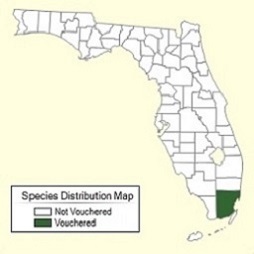 Fig. 34. P. tetragonolobus distribution range Economic Importance The winged bean is promoted by organizations such as Leaf for Life (www.leafforlife.org) and Plants For A Future (pfaf.org). Further Reading Beans, BugwoodWiki, University of Georgia Winged Bean Origins ext. link Older Material Goa bean, 1919, Sturtevant’s Edible Plants Of The World List of Growers and Vendors | ||||||||||||||||||||||||||||||||||||||||||||||
| Bibliography 1 Stephens, James M. "Winged Bean." University of Hawai'i at Mānoa, College of Tropical Agriculture and Human Resources, 2007, CTAHR, www.ctahr.hawaii.edu/new/fjgi/pdf/WingedNL.pdf. Accessed 19 May 2019. 2 "Psophocarpus tetragonolobus." Ecocrop, Food and Agriculture Organization of the United Nations, FAO, ecocrop.fao.org/ecocrop/srv/en/dataSheet?id=1807. Accessed 18 May 2019. 3 Tuquero, Joe and Glen Takai. "Winged bean (Psophocarpus tetragonolobus). Varieties for Guam." Cooperative Extension and Outreach, College of Natural and Applied Sciences, Feb. 2018, University of Guam, cnas-re.uog.edu/wp-content/uploads/2018/02/Winged-been_2_23_18-Proof-9.pdf. Accessed 18 May 2019. 4 "Synonyms for Psophocarpus tetragonolobus (L.) DC." The Plant List (2013), Version 1.1, www.theplantlist.org. Accessed 25 May 2019. 5 Venketeswaran, S., et al. "The Winged Bean: A Potential Protein Crop." Advances in new crops, Edited by J. Janick and J. E. Simon, 1990, NewCROP TM, hort.purdue.edu/newcrop/proceedings1990/V1-443.html#Venketeswaran. Accessed 19 May 2019. 6 Perry, M. C. "International System for Germplasm: New Crop Genetic Resources and the International Board for Plant Genetic Resources." Advances in new crops, Edited by J. Janick and J. E. Simon, 1990, NewCROP TM, hort.purdue.edu/newcrop/proceedings1990/V1-075.html. Accessed 19 May 2019. 8 "Psophocarpus tetragonolobus (L.) DC." NParks Flora&FaunaWeb, National Parks Singapore, florafaunaweb.nparks.gov.sg/special-pages/plant-detail.aspx?id=3335. Accessed 25 May 2019. 9 Tanzi, Alberto Stefano, et al. "Winged bean (Psophocarpus tetragonolobus (L.) DC.) for food and nutritional security: synthesis of past research and future direction." Planta, 25 Mar. 2019, Springer, doi.org/10.1007/s00425-019-03141-2. Accessed 27 May 2019. 10 Motis, Tim. "Winged Bean Revisited." Echo Research, Echo Community, edn.link/hwtqkj. Accessed 25 May 2019. 11 "The Winged Bean: A High-Protein Crop for the Tropics." National Research Council, Second edition, 1981, The National Academies Press, Washington, DC, doi.org/10.17226/19754. Accessed 23 May 2019. 12 Martin, Franklin W. "Vegetables for the Hot, Humid Tropics Part 1. The Winged Bean, Psophocarpus tetragonolobus." Agricultural Research Service, U.S. Dept. of Agriculture, Southern Region, 1978, The Internet Archive, ia801207.us.archive.org/9/items/CAT79711173/CAT79711173.pdf. Accessed 27 May 2019. Videos v1 Kent, Regine. "How To Start Winged Bean Seeds." Asian Garden 2 table, www.asiangarden2table.com/product/winged-bean/. Accessed 29 May 2019. v2 Kent, Regine. "How To Grow Winged Bean." Asian Garden 2 table, www.asiangarden2table.com/. Accessed 20 May 2019. v3 Kent, Regine. "Prune your winged bean to produce more and more! 四棱豆整枝增产!" Asian Garden 2 table, www.asiangarden2table.com/growing-vegetables/beans-peas/. Accessed 6 July 2019. Photographs Fig. 1 Ringer. "Psophocarpus tetragonolobus." 22 Sept. 2014, Wikimedia Commons, (CC BY-SA 4.0), commons.wikimedia.org/w/index.php?title=File:Parapagulong_bunga.jpg&oldid=224572487. Accessed 23 May 2019. Fig. 2 Maurin, Olivier. "Psophocarpus tetragonolobus." BOLDSYSTEMS, OM3933, 2012, (CC BY-NC-SA), boldsystems.org/index.php/Taxbrowser_Taxonpage?taxon=Psophocarpus+tetragonolobus&searchTax=Search+Taxonomy. Accessed 31 May 2019. Fig. 3 Prenn. "Psophocarpus tetragonolobus (L.) D.C. Flowers and fruits of winged bean." Wikimedia Commons, 24 Dec. 2013, (CC BY-SA 3.0), commons.wikimedia.org/w/index.php?title=File:Psophocarpus_tetragonolobus_01.JPG&oldid=242762210. Accessed 22 May 2019. Fig. 4 Vinayaraj. "Psophocarpus tetragonolobus." Wikimedia Commons, 13 Oct. 2013, (CC BY-SA 4.0), commons.wikimedia.org/wiki/Category:Psophocarpus_tetragonolobus#/media/File:Psophocarpus_tetragonolobus_10.JPG. Accessed 23 May2019. Fig. 5 KENPEI. "Psophocarpus tetragonolobus, Osaka-fu Japan." Wikimedia Commons, 11 Aug. 2007, (CC BY-SA 2.5), commons.wikimedia.org/wiki/File:Psophocarpus_tetragonolobus4.jpg. Accessed 22 May 2019. Fig. 6 Starr, Forest and Kim. "Psophocarpus tetragonolobus (wing bean). Leaves and seedpod, Waiehu, Maui, Hawai'i." Starr Environmental, July 20, 2009, (CC BY 4.0), starrenvironmental.com/images/image/?q=24635294654. Accessed 24 May 2019. Fig. 7 Makoto, Okimura. "Cultivation Of The Winged Bean ‘urizun’ in Okinawa = つるの形態. Ishigaki City In Okinawa Prefecture (沖縄県石垣市)." JIRCAS Library, c. 1990, Flickr, (CC BY 4.0), Image cropped, www.flickr.com/photos/jircas/36660587686/. Accessed 6 June 2019. Fig. 8 Franck, A. R. "Psophocarpus tetragonolobus." Species Distribution Range, USF Water Institute, Institute for Systematic Botany, University of South Florida, Tampa, 21 Jun. 2014, Atlas of Florida Plants, cdn.plantatlas.org/img/specimens/USF/273968.jpg. Accessed 25 May 2019. Fig. 9 Starr, Forest and Kim. "Psophocarpus tetragonolobus (wing bean). Wing beans leaves, Hawea Pl Olinda, Maui, Hawai'i." Apr. 11, 2011, Starr Environmental, (CC BY 4.0), starrenvironmental.com/images//image/?q=24964408012. Accessed 24 May 2019. Fig. 10 Starr, Forest and Kim. "Psophocarpus tetragonolobus (wing bean). Flower and leaves, Waiehu, Maui, Hawai'i." July 20, 2009, (CC BY 4.0), Starr Environmental, starrenvironmental.com/images/image/?q=24602624639. Accessed 25 May 2019. Fig. 11 KENPEI. "Psophocarpus tetragonolobus, Osaka-fu Japan." Wikimedia Commons, 11 Aug. 2007, (CC BY-SA 2.5), commons.wikimedia.org/wiki/File:Psophocarpus_tetragonolobus2.jpg. Accessed 22 May 2019. Fig. 12,14,15,23 Makoto, Okimura. "Cultivation Of The Winged Bean ‘urizun’ in Okinawa = 採種時期の莢, Ishigaki City In Okinawa Prefecture, Japan." JIRCAS Library, c. 1990, Flickr, (CC BY 4.0), Images cropped, www.flickr.com/photos/jircas/with/36660588766/. Accessed 25 May 2019. Fig. 13 Makoto, Okimura. "Winged Bean ‘urizun’. Ishigaki City In Okinawa Prefecture (沖縄県石垣市)." JIRCAS Library, c. 1990, Flickr, (CC BY 4.0), Image cropped, www.flickr.com/photos/jircas/35896861103/. Accessed 6 June 2019. Fig. 16 Makoto, Okimura. "Cultivation Of The Winged Bean ‘urizun’ in Okinawa = 種子の形態. Ishigaki City In Okinawa Prefecture (沖縄県石垣市)." JIRCAS Library, c. 1990, Flickr, (CC BY 4.0), Image cropped, www.flickr.com/photos/jircas/36311433820/. Accessed 6 June 2019. Fig. 17 Frodesiak, Anna. "Psophocarpus tetragonolobus, also know as the winged bean, purchased in Haikou, Hainan, China." Wikimedia Commons, 21 May 2013, Public Domain, commons.wikimedia.org/w/index.php?title=File:Psophocarpus_tetragonolobus_in_Hainan_-_01.jpg&oldid=284502255. Accessed 22 May 2019. Fig. 18 Starr, Forest and Kim. "Psophocarpus tetragonolobus (wing bean). Habit in vegetable garden, Hawea Pl Olinda, Maui, Hawai'i." Starr Environmental, July 31, 2011, (CC BY 4.0), starrenvironmental.com/images/image/?q=24806702090. Accessed 25 May 2019. Fig. 19 Mead, David E. "Fresh winged bean pods (Psophocarpus tetragonolobus) for sale at a market on northern Buton Island, Indonesia." Wikimedia Commons, 15 Sept. 2015, (CC0), commons.wikimedia.org/w/index.php?title=File:Winged_bean_pods.jpg&oldid=248419457. Accessed 22 May 2019. Fig. 20 Starr, Forest and Kim. "Psophocarpus tetragonolobus (wing bean). Dried up seedpod, Residences Sand Island, Midway Atoll, Hawai'i." Starr Environmental, Mar. 25, 2015, (CC BY 4.0), starrenvironmental.com/images/image/?q=25239648916. Accessed 25 May 2019. Fig. 21 Makoto, Okimura. "Winged Bean ‘urizun’, Okinawa, Ishigaki City In Okinawa Prefecture (沖縄県石垣市)." JIRCAS Library, c. 1990, Flickr, (CC BY 4.0), Image cropped, www.flickr.com/photos/jircas/36660587526/. Accessed 10 Aug. 2019. Fig. 22 Makoto, Okimura. "Cultivation Of The Winged Bean ‘urizun’ in Okinawa = 塊根の形態, Ishigaki City In Okinawa Prefecture (沖縄県石垣市)." JIRCAS Library, c. 1990, Flickr, (CC BY 4.0), Image cropped, www.flickr.com/photos/jircas/36537329172/. Accessed 10 Aug. 2019. Fig. 24 Slater, Susan. "Winged beans, goa beans (Psophocarpus tetragonolobus) ไทย: ถั่วพู (thua phu)." 29 Jan. 2012, Wikimedia Commons, 29 Jan. 2012, (CC BY-SA 4.0), commons.wikimedia.org/w/index.php?curid=46474061. Accessed 23 May 2019. Fig. 25 Wagaung. "Roots of the Winged bean, in Mandalay, Myanmar." Wikimedia Commons, 24 Jan. 2008, (CC BY-SA 3.0), commons.wikimedia.org/w/index.php?title=File:Wingedbean_roots.JPG&oldid=160960877. Accessed 23 May 2019. Fig. 26 Slotta, Tracey. "Psophocarpus tetragonolobus (L.) DC. - winged bean." USDA, NRCS, National Plant Data Team, Greensboro, NC 27401-4901 USA, 2019, The PLANTS Database, plants.usda.gov/. Accessed 18 May 2019. Fig. 27 Makoto, Okimura. "Cultivation Of The Winged Bean ‘urizun’ in Okinawa = ハウス内トンネル支柱のネット栽培. Ishigaki City In Okinawa Prefecture (沖縄県石垣市)." JIRCAS Library, c. 1990, Flickr, (CC BY 4.0), Image cropped, www.flickr.com/photos/jircas/36537330032/. Accessed 10 Aug. 2019. Fig. 28 Makoto, Okimura. "Cultivation Of The Winged Bean ‘urizun’ in Okinawa = 地這い栽培, Ishigaki City In Okinawa Prefecture (沖縄県石垣市)." JIRCAS Library, c. 1990, Flickr, (CC BY 4.0), Image cropped, www.flickr.com/photos/jircas/36660588386/. Accessed 10 Aug. 2019. Fig. 29 T. S. Ralph. "Psophocarpus tetragonolobus." Icones carpologicae, p. 27, t. 30, fig. 13, 1849, Plantillustrations, plantillustrations.org/illustration.php?id_illustration=166551. Accessed 25 May 2019. Fig. 30 Blanco, Francisco Manuel. "Dolichos tetragonolobus, Psophocarpus tetragonolobus var. Macropterus." Flora de Filipinas, Gran edicion, Atlas II, Plate from book, Biblioteca Digital, 1880-1883, Real Jardín Botánico, commons.wikimedia.org/w/index.php?curid=2565103. Accessed 23 May2019. Fig. 31 Wagaung. "Boiled roots of winged bean (pè myit) in Myanmar." Wikimedia Commons, 3 Jan. 2007, (CC BY-SA 3.0), commons.wikimedia.org/wiki/Category:Psophocarpus_tetragonolobus#/media/File:P%C3%A8_myit.jpg. Accessed 23 May 2019. Fig. 32 Ramon FVelasquez. "Ginataang sigarilyas, a Filipino dish of winged bean (sigarilyas) in coconut milk." Wikimedia Commons, 15 Dec. 2012, (CC BY-SA 3.0), commons.wikimedia.org/wiki/File:Sigarilyasjf1338.JPG. Accessed 27 May 2019. Fig. 33 toyohara. "I cooked this at home." Flickr, Oct. 28, 2012, (CC BY-NC 2.0), www.flickr.com/photos/toyohara/8130453098/. Accessed 25 May 2019. Fig. 34 Wunderlin, R. P., et al. "Psophocarpus tetragonolobus." USF Water Institute, Institute for Systematic Botany, University of South Florida, Tampa, 2019, Atlas of Florida Plants, florida.plantatlas.usf.edu/Plant.aspx?id=4403. Accessed 23 May 2019. * UF/IFAS Assessment of Non-native Plants in Florida's Natural Areas ** The information provided above is not intended to be used as a guide for treatment of medical conditions using plants. Published 9 July 2019 KJ. Last update 7 June 2020 KJ | |||||||||||||||||||||||||||||||||||||||||||||||


